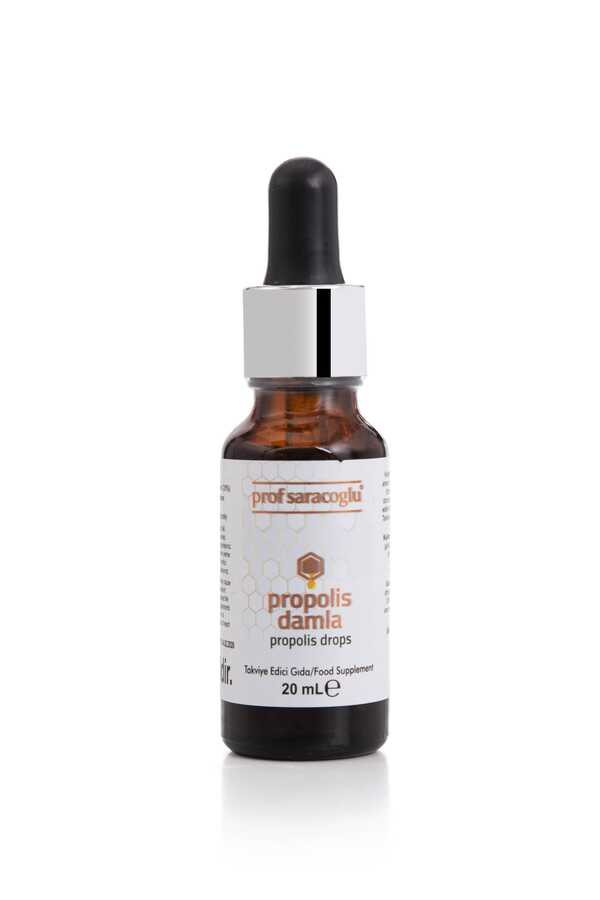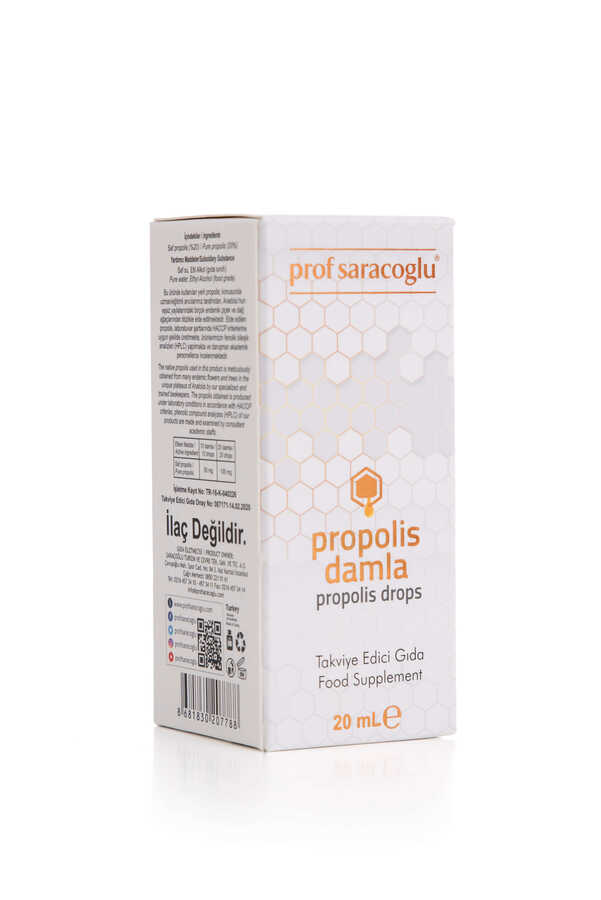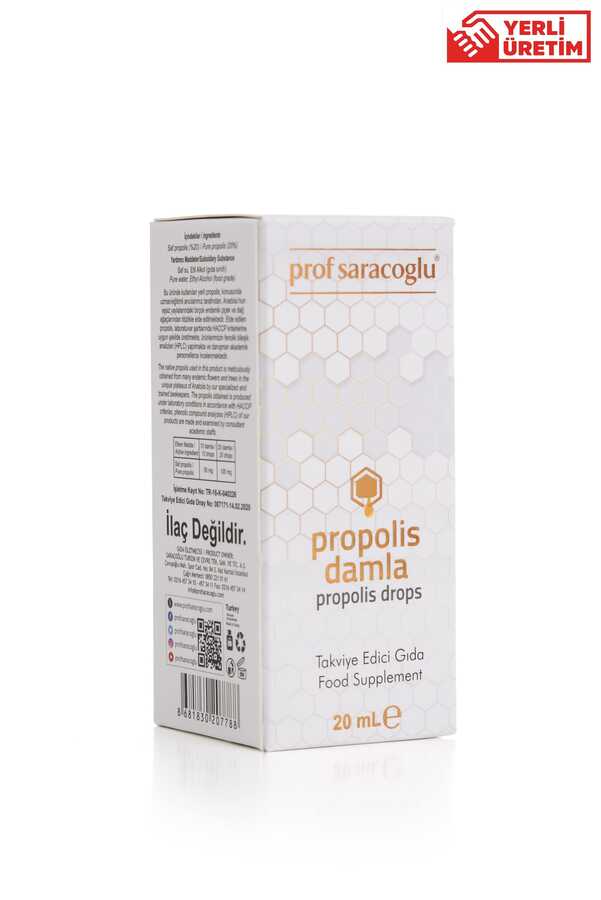Prof Saracoglu
Propolis - A Drop Food Supplement
Propolis - A Drop Food Supplement
Couldn't load pickup availability
Propolis - A Drop Food Supplement 20 ml. (Ethanol Based)
What is Propolis?
Propolis is a resinous substance collected by worker bees from plant leaves, stems, and buds to protect the food, larvae, and themselves within the hive from various pathogenic microorganisms and viruses. The bees biochemically transform this substance with enzymes secreted from glands located on their heads, creating propolis.
How Should Propolis Be Consumed?
Propolis, when first collected (raw propolis), contains various impurities and wax. This is primarily due to its extremely sticky nature and the fact that it is obtained by scraping from traps or hives. Consuming it in this form (raw propolis) is not recommended due to the loss of beneficial components and the presence of impurities that may be mixed in during scraping. Instead, consuming it in its separated extract form is more advantageous.
What do we offer you?
As you can see, many different inputs affect the quality of the final product. Therefore, we approach each stage separately.
1) Raw Material: We use only domestically produced raw propolis, ensuring that we both support our country's beekeepers and ensure we obtain high-quality raw materials without any doubt. The raw materials we source are analyzed and classified, preventing regional differences in content.
2) Solvent type: We only use solvents suitable for human health, thus we produce in its purest form without using any preservatives, colorants or flavorings.
3) Technical: We are continuously working on this area. To achieve increasingly successful results, we continuously monitor and improve our product quality through partnerships with universities and laboratories. Through these partnerships, we analyze and monitor the amount of phenolic compounds in our products.
4) Propolis ratio: Like sugar, which dissolves in water, propolis dissolves in solvents to a certain extent. With Prof. Saracoglu's propolis, we increase this ratio to the point where the solvent is saturated with propolis. Currently, production is carried out with a pure propolis content of around 20%.
Why might sensory differences such as color and taste occur between our products?
Color and flavor changes can vary depending on the production period and region of the raw material used, from solvent techniques to the product's exposure to light. When preparing propolis, Prof. Saracoglu's primary goal is to provide you with the purest form of propolis without compromising the quality of the final product and without using additives to stabilize its color, odor, and flavor.






